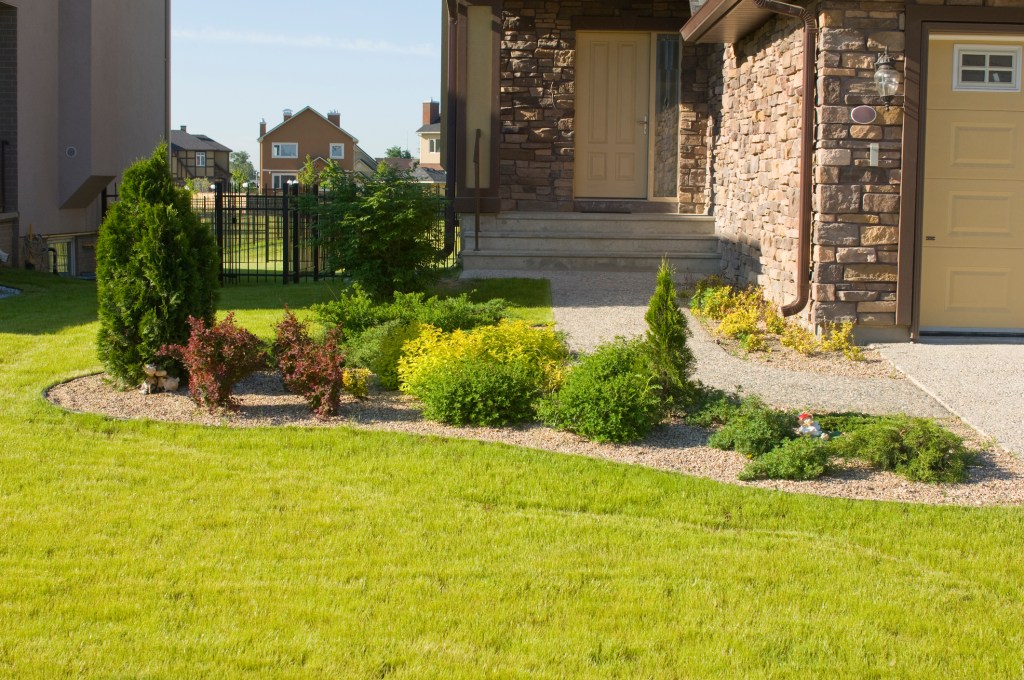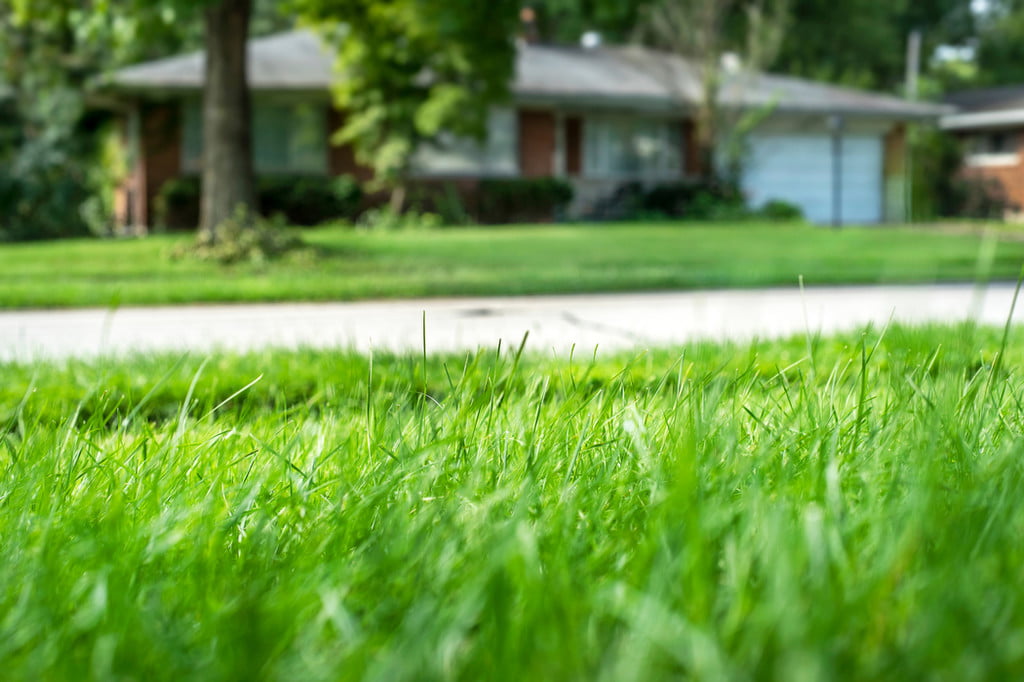The secret to a lush, healthy lawn isn’t a one-size-fits-all solution. Even before you consider upkeeping factors such as watering and mowing, there’s the matter of choosing the ideal type of grass for your yard. Where you live and how much time you have to maintain your yard all play into how healthy your grass will look. Read ahead to learn about the best types of lawn grass and how to care for them.

What to consider when you choose lawn grass
Before you even pick out grass, assess the conditions in which the grass will grow. Consider your climate zone and see if it falls north, south, or somewhere in the middle of the United States. When picking out grass, you might hear people talking about three general regions: the northern, southern, and transition zones.
- Northern zone: The northern part of the country experiences moderate summers and cold winters, so cool-season grasses such as perennial ryegrass and Kentucky bluegrass best suit this region. Cold-season grass grows best in cold weather but will go brown and dormant in summer if it gets too hot.
- Southern zone: The southern part of the country usually experiences hot summers and moderate winters, so it features the right conditions for warm-season grasses such as zoysiagrass and Bermudagrass. Warm-season grass grows best in hot weather but will go brown and dormant in the cold.
- Transition zone: The middle part of the country has both hot summers and cold winters, so grass that can tolerate both conditions do best in it. Warm-season and cold-season grasses can struggle in this region. In the transition zone, you can use a mix warm- and cool-season grasses, although cool-season grasses tend to do a little better. Tall fescue, technically a cool-season grass, is typically tolerant of both cold and heat.
While shopping for grass, also consider where it would be situated in your yard. Will it be in salty soil? Dry soil? Will it receive plenty of light or ample shade? If you live in an area with hot summers or dry winters, consider investing in drought-tolerant grass. For a low-maintenance lawn, choose a grass that can handle heavy foot traffic, only requires modest fertilizing, and needs little mowing.
If you want your grass to stay green all year, plant cool-season grass in the fall and give it extra maintenance all year long, or consider overseeding warm-season grass towards the spring.

Best types of lawn grass
Because there are so many grass types out there, it may be hard to choose the right one for your lawn. Here are the hardiest, most popular grasses and what you need to know about their upkeep.
Kentucky bluegrass
Kentucky bluegrass is a cool-season grass commonly found in the northern region of the United States. Typically planted in the fall, this dense and dark grass can withstand heavy foot traffic and cold winters. You will, however, need to water this grass more frequently, especially in the summer when it can go dormant. It also won’t do very well in the shade, so give it full sunlight.
Perennial ryegrass
This fine, cool-season grass is usually found in mixes with Kentucky bluegrass, as it doesn’t spread widely. It’s usually planted in the fall with other cool-season grasses, though you could also overseed it with warm-season grasses. What’s excellent about ryegrass is that it germinates quickly. Bear in mind that it’s not drought resistant, so you need to water it frequently.
Zoysia
Zoysia, a warm-season grass, is often found in the southern zone. It’s hardy to zone 6, so it can tolerate any region that doesn’t experience subzero temperatures. It’s dense, lush, weed-inhibiting, and durable while tolerating drought and shade. Plant zoysiagrass in late spring — it may grow slowly, but it’s a durable grass once you establish it. Just be sure to give it warmth and moderate watering.
Tall fescue
Technically a cool-season grass, tall fescue can handle heat and drought, so it can be enjoyed in transition and southern zone regions as well. It’s also easy-going when it comes to light — keep it in shade or full sun. Because of its coarse texture, it looks best when mixed with other grasses, although new varieties can be attractive on their own, too.

Frequently asked questions about lawn grass
How many types of lawn grass are there?
Technically speaking, there are up to 12,000 different types of grass. For scale, there are 200 types of cold-season Kentucky bluegrass alone. If you’re a lawn novice, there are, for all intents and purposes, two grass types: cool-season grass and warm-season grass.
Which grass is better for a lawn?
There’s no best type of grass for a lawn — it all depends on where you live and how much you want to maintain your yard. Kentucky bluegrass is the most common type of grass since it grows prolifically. That said, it’s not suited for every region because it only thrives in cool areas. If you’re looking for drought-tolerant grass, you’re better off looking at options such as Bermudagrass and zoysiagrass.
What is the easiest grass to maintain?
The easiest grass to maintain depends on where you live. If you live in a northern area, cool-season grass may be easier to keep green. For those in the south, warm-season grass, such as zoysia, requires less upkeep because it grows slowly and tolerates foot traffic. Fescue grasses work well for northern and transitional zones because they can thrive in a wide range of temperatures and only need modest fertilizing.
Which grass stays green all year?
How long your grass stays green depends on two factors: your specific region and your maintenance routine. Warm-season grasses can go brown and dormant in the cold, while cool-season grasses can do the same in the heat. Once you figure out the right type of grass for your area, consistently water it (if it’s not drought tolerant) and consider overseeing your lawn during the fall and spring.
When you choose the best type of grass for your yard, it might look different from someone else’s lawn choice — and that’s perfectly fine. For a starting point, you often can’t go wrong with popular picks such as Kentucky bluegrass, perennial ryegrass, zoysiagrass, and tall fescue. As long as you put in the work to maintain your lawn and research its care requirements, you’ll be on your way to keeping your side of the grass greener.
Editors' Recommendations
- 3 incredible reasons why you should be using coffee grounds in your garden
- Why mulching might be the best option for your old Christmas tree
- These are the 10 best gardening shows to stream right now
- A guide to winter lawn fertilizer for keeping your turf healthy this season
- 4 November garden plants you should consider growing




